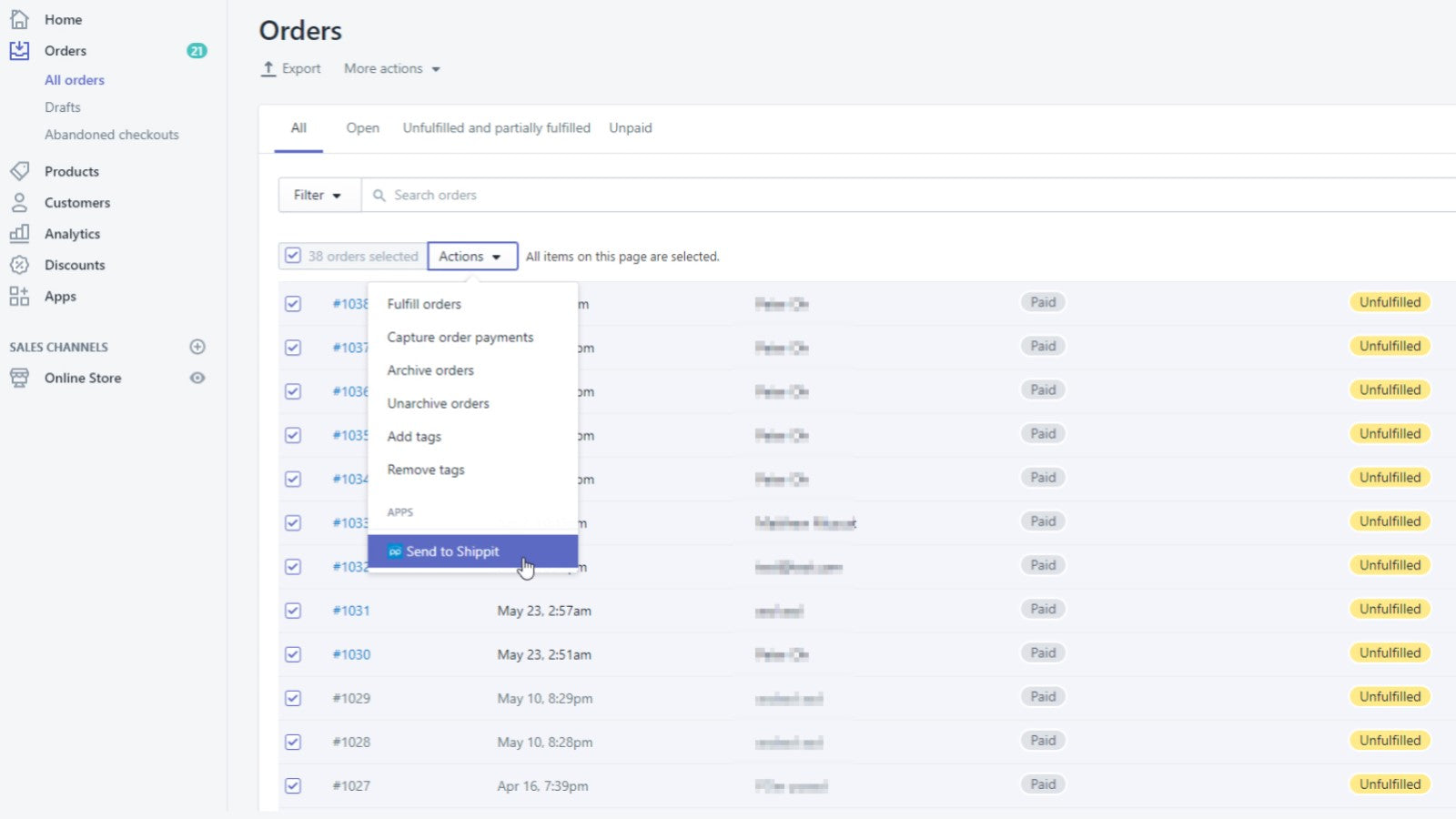
We’re also contributing to that enthusiasm ourselves. By becoming a part of that community, Shopify stands to gain significantly from that enthusiasm. WebAssembly is an energized community that’s constantly building new things and has a lot of potential left to reach. If nobody was working on the Wasm ecosystem, or even if it was just on life support in its current state, we wouldn’t use it. But there’s more to it than that-it’s about the people as well as the technology. We have a fundamental alignment in goals and design, which provides our “engineering reason” for using Wasm. This allows us to support multiple languages for developer use without altering the underlying execution model.

As a bytecode format, Wasm is targeted by a number of different compilers. This means providing first class development experiences in multiple languages they’re familiar with.
#Shipit shopify code#
FlexibleĪ code execution service is only as useful as the developers using it are productive. As a result, Wasm and surrounding tooling was built, and continues to be built, with a performance focus. It’s used by a community of performance driven developers looking to optimize browser execution. Wasm is designed to leverage common hardware capabilities that provide it near native performance on a wide variety of platforms. If a feature we deliver to merchants doesn’t come with the right tradeoff of load times to customization value, then we may as well not deliver it at all. In ecommerce, speed is a competitive advantage that merchants need to drive sales. More details on the security model of Wasm can be found on. Wasm also hosts a number of features which protect the user from buggy code, including protected call stacks and runtime type checking. This differs from bytecodes which have references to the computers or operating systems they expect to run on built right into the syntax. You can only express manipulations of the virtual environment and use provided imports. Because of this, you cannot express anything malicious in Wasm. Wasm executes within a sandboxed stack-based environment, relying upon explicit imports to allow communication with the host. While no application is entirely secure, we need to both prevent security flaws and mitigate their impacts when they occur.

SecurityĮxecuting untrusted code is a dangerous thing-it's exceptionally difficult to predict by nature, and it has potential to cause harm to Shopify’s platform at large. Wasm satisfies our three main technical requirements: security, performance, and flexibility. It solves the more general problem of performant execution in untrusted environments, which exists in browsers and code execution engines alike. Wasm, far from being solely a Javascript replacement, is designed for Web and Non-Web Embeddings alike. We, however, execute Wasm outside of the browser and with no Javascript involved. Wasm is often presented as a performant language that runs alongside JavaScript from within the Browser.
#Shipit shopify series#
To learn more, see this series of illustrated articles written by Lin Clark of Mozilla with information on WebAssembly and its history.
#Shipit shopify portable#
Wasm is designed as a portable compilation target for programming languages, enabling deployment on the web for client and server applications.” “WebAssembly (abbreviated Wasm) is a binary instruction format for a stack-based virtual machine. We choose a universal format for that code that ensures it’s performant, secure, and flexible: WebAssembly. To make this a reality we’re keeping the flexibility of untrusted Partner code, but executing it on our own infrastructure. We want Partners to focus on using their domain knowledge to solve problems, and not on managing scalable web services.

Even if Partners’ resources were unlimited, the network latency incurred when communicating with Shopify precludes the use of Apps for time sensitive use cases. Partners are stretched beyond their available resources as they have to build a web service that can operate at Shopify’s scale. This model is powerful, but comes with a host of technical issues. The primary mechanism of this ecosystem is an “App”, an independently hosted web service which communicates with Shopify over the network. These interfaces empower a rich ecosystem of Partners to solve a variety of problems. We make the rest possible by exposing interfaces to query, extend and alter our Platform. On February 24, 2021, Shipit!, our monthly event series, presented Making Commerce Extensible with WebAssembly. The video is now available.Īt Shopify we aim to make what most merchants need easy, and the rest possible.


 0 kommentar(er)
0 kommentar(er)
